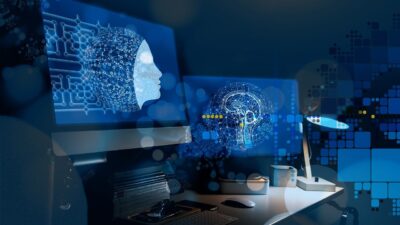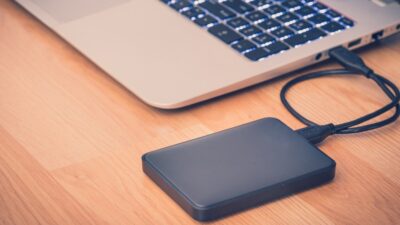Be it an industrial Internet of Things or consumer, the markets are growing steadily and evolving. Internet of Things means all the devices such as sensors, controllers, and actuators that collect, transmit data, and take action replacing human presence.
- Worried whether you left lights on or an iron? Just open an app and check that either with smart plugs or connected smart devices.
- In an industrial setting, assigning a person to monitor some trivial tasks might be impossible or this will qualify as a money pit. However, a small sensor can monitor and report things flawlessly and cost-efficiently.
With that many benefits and new conveniences, IoT Application Development will demonstrate only wider adoption, increased market penetration, and provide even more economic value. Even though IoT seems more complex due to the hardware part and increasingly stricter data privacy standards and regulations, an IoT development company can streamline the process of getting your IoT business idea off the ground. So, let’s explore the latest emerging trends and how they are going to shape the industries.
IoT Trends and Predictions for 2025
Here is the summary of top trends in IoT looking beyond 2025, up to 2030, according to Transforma Insights.

While some sectors enjoy wide adoption but slow growth rates, others represent emerging and rapidly growing markets.
- For instance, Government IoT is the largest segment by revenues represented largely by Smart Cities IoT. It is predicted to surpass 61 bn USD worldwide with a growth rate of 8.0%.
- Next to it by size is the transportation & storage IoT segment which encompasses smart vehicles and supply chain IoT. This sector is going to grow at a rate of 8.6% and reach 35bn USD by 2030.
Overview of top IoT trends
Here is an overview of top IoT trends and their financial potential in the table below according to Transforma Insights.
| IoT Segment | Recurring Revenue (RR) for 2030 (USD, million) | Growth Rate (CAGR, %) |
| Government | 61082.1 | 8.0 |
| Transportation & Storage | 35051.0 | 8.6 |
| Retail & Wholesale | 31495 | 7.3 |
| Electricity, gas, steam & a/c | 19252.6 | 9.2 |
| Administrative | 7808.4 | 13.4 |
| Finance & Insurance | 5394.1 | 11.4 |
| Manufacturing | 6732.6 | 11.0 |
| Accommodation & Food Service | 6463.6 | 9.6 |
| Water Supply & Waste Management | 5063.0 | 13.7 |
| Health & Social Care | 3559.9 | 17.0 |
| Agriculture, Forestry & Fishing | 2461.7 | 18.7 |
| Construction | 787.6 | 10.1 |
| Mining & Quarrying | 797.8 | 6.0 |
| Information & Communication | 93.6 | 11.9 |
| Professional, Scientific & Technical | 387.0 | 15.7 |
| Arts & Entertainment | 7.6 | 31.4 |
The key here is to understand that the smaller the RR is and the higher the CARG is, the more expertise and R&D a startup should show to launch an IoT solution.
Larger markets with stable growth rates are open to those who might opt for off-the-shelf hardware or even simply use an SDK of an existing one. For the latter, an IoT development company can produce an IoT solution quite fast and at affordable prices which represents the nearest future of IoT. The competitive edge is usually gained through the quality of insight offered by an app along with better performance.
Reviewing 2024 IoT Challenges and Advances
As said above, some markets become open to new players without the need to invest in a hardware part. Using advances in AI and ML businesses can generate more value by offering better data analysis and advanced decision-making algorithms.
In terms of performance, edge computing instead of traditional cloud computing makes the IoT app increasingly fast and performant.
However, the challenges remain. Going into a rapidly evolving field is likely to require investment in hardware manufacturing or assembling as well as some R&D costs. Additionally, since IoT deals with data, it must be properly protected when it is stored and transmitted.
Role of IoT in Mobile App Development
iPhone is leading the IoT mobile app development with the quality and number of sensors it packs inside the device. This enables a new level of insight while it is also extremely easy to access for development purposes. Below you can see one of the examples of how easy it is to access all iPhone sensors and visualize the data.

This is done using the setup below described by Kristian Raue.

Mobile IoT development represents quite a rich and accessible IoT segment. In some instances, according to Kristian Raue:
In addition to MQTT, Streamsheets supports many other protocols like HTTP, SMTP, or Kafka. In the Premium version of Streamsheets, you also have support for OPC UA (client and server) which makes additional use cases in Industry 4.0 and Smart Factory possible.
Overall, Android and Microsoft also offer solid opportunities to support mobile IoT development. This all makes mobile IoT development one of the strongest emerging trends.
Steps of IoT Mobile Application Development
Development of Internet of Things applications follows the MVP development path. However, there are certain considerations that are unique to IoT app development.
Stage 1 – Idea Validation. For IoT development, it is not only about researching IoT trends but also about checking the technical feasibility and regulatory compliance (e.g., FCC, CE, GDPR).
Stage 2 – Prototyping. It involves moodboarding for the software as well as hardware considerations.
Stage 3 – UI/UX design. Here it is vital to consider data visualizations, dashboards, screen space, voice controls, device pairing, and such. IoT for business mainly depends on how data is analyzed and presented for decision-making, so this stage is most important from that perspective.
Stage 4 – Pre-development. This is a tech-heavy stage where all major Internet of Things technology considerations are worked out. They are communication protocols, architecture, and security planning.
Stages 5 and 6 are straightforward – develop and test iterate as you would for any other MVP solution. With the exception that if you do your firmware, you might do a small batch first for testing with pilot users in controlled environments.




